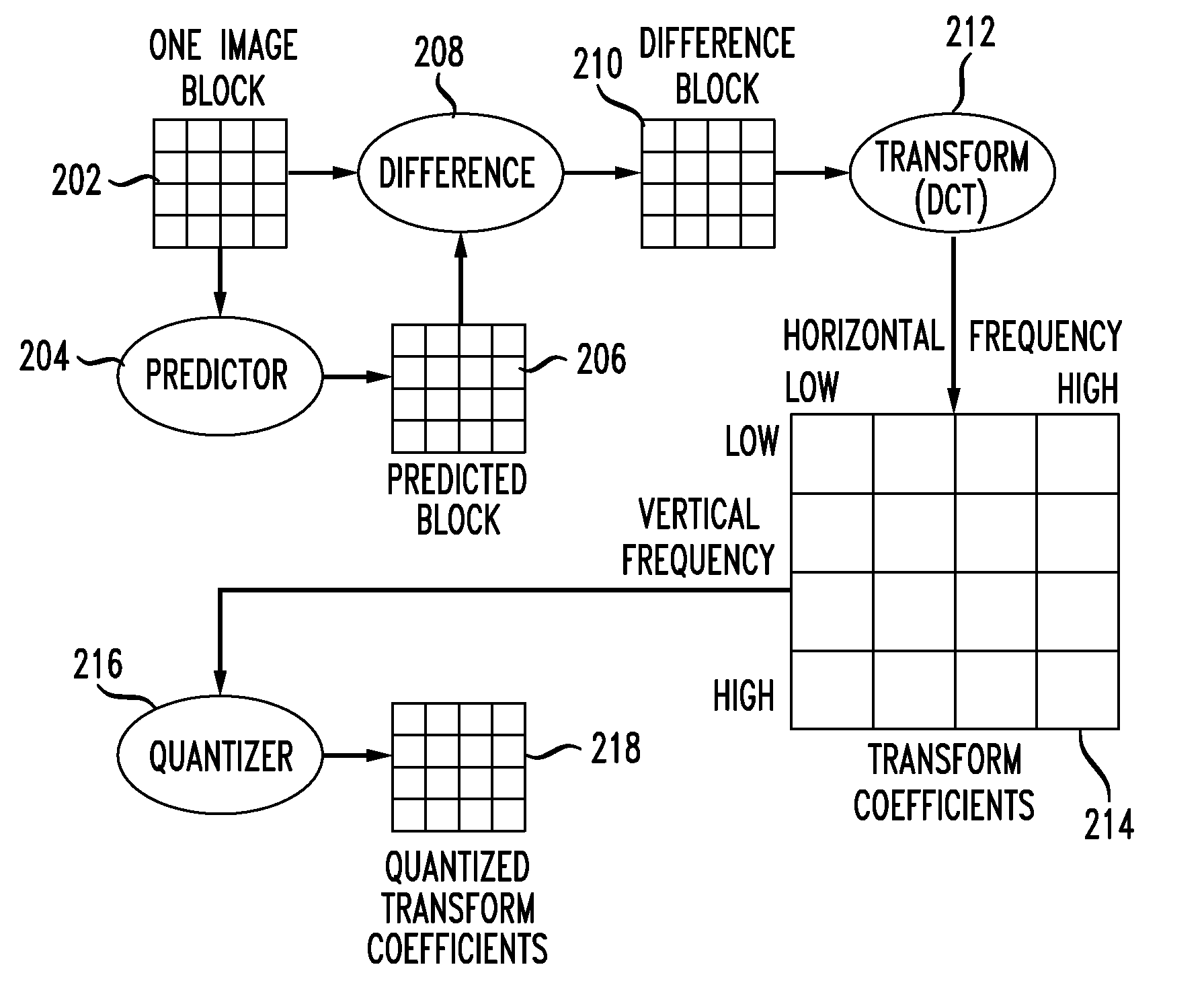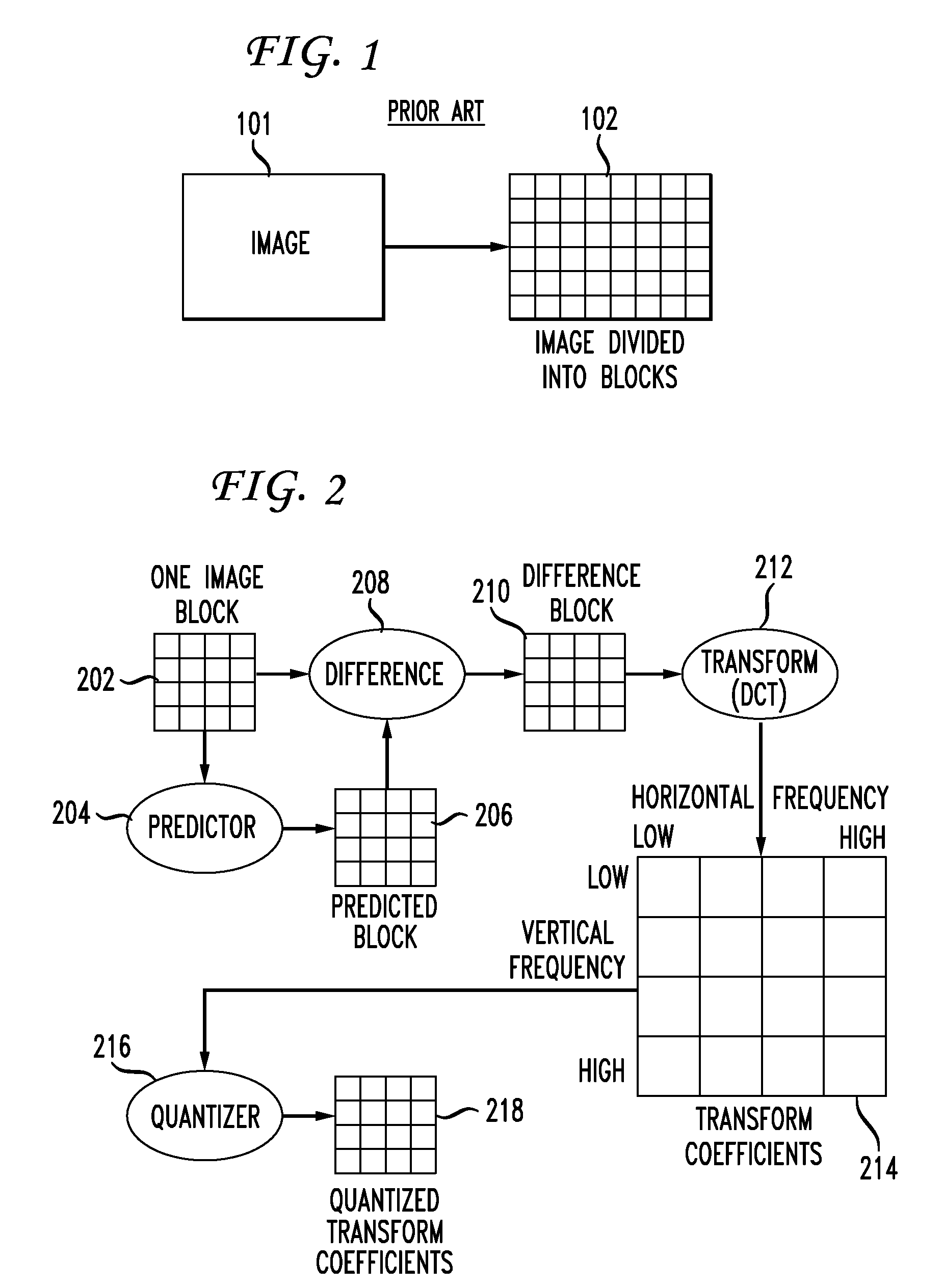System and method for using pattern vectors for video and image coding and decoding
a pattern vector and video compression technology, applied in the field of system and method of video compression coding and decoding, can solve the problems of inefficiency, inability to take advantage of correlations between coefficients other than those implied by fixed coefficient ordering, and inability to use theoretical arithmetic coder unlimited precision arithmetic, etc., to achieve the effect of improving coding and decoding efficiency
- Summary
- Abstract
- Description
- Claims
- Application Information
AI Technical Summary
Benefits of technology
Problems solved by technology
Method used
Image
Examples
Embodiment Construction
[0031] The present invention may be understood with reference to FIG. 6. FIG. 6 shows a sample method of using pattern vectors for image coding according to an aspect of the invention. The method may be performed by the hardware components known to those of skill in the art. The method comprises converting a block of image data into an array of transform coefficients (602) and quantizing the transform coefficients such that all, some or none of the coefficients become zero (604). The method further comprises constructing a bit vector indicating which coefficients are non-zero (606) and coding the bit vector as an integer using an adaptive, semi-adaptive or non-adaptive arithmetic coder (608). Those of skill in the art will be aware of such arithmetic coders. Here it is noted that although a bit vector is referenced, the core idea of the present invention does not necessarily require the use of a bit vector given that the invention's principle is that all the zero and non-zero coeffi...
PUM
 Login to View More
Login to View More Abstract
Description
Claims
Application Information
 Login to View More
Login to View More - R&D
- Intellectual Property
- Life Sciences
- Materials
- Tech Scout
- Unparalleled Data Quality
- Higher Quality Content
- 60% Fewer Hallucinations
Browse by: Latest US Patents, China's latest patents, Technical Efficacy Thesaurus, Application Domain, Technology Topic, Popular Technical Reports.
© 2025 PatSnap. All rights reserved.Legal|Privacy policy|Modern Slavery Act Transparency Statement|Sitemap|About US| Contact US: help@patsnap.com



